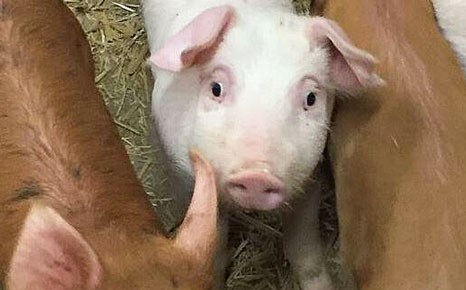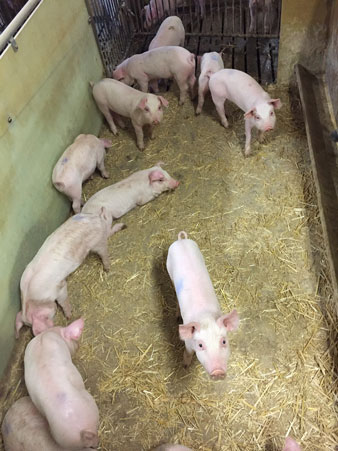Facts:
Publications in the project
Feel free to click on our page to see our results.
Research articles
- Wallgren, T. and Gunnarson, S., 2022. Implementation of Straw Racks in Commercial Pig Housing - Impact on Straw Availability and Pig Behaviour. Agriculture 12, 5. https://doi.org/10.3390/agriculture12010005.
- Wallgren, T., Lundeheim, N. and S. Gunnarsson, 2020. Impact of amount of straw on pig and pen hygiene in partly slatted flooring systems. BMC Veterinary Research, 16:377. https://doi.org/10.1186/s12917-020-02594-y.
- Wallgren, T., Westin, R., Gunnarsson, S. 2016. A survey of straw use and tail biting in Swedish pig farms rearing undocked pigs. Acta Veterinaria Scandinavica 201658:84 https://doi.org/10.1186/s13028-016-0266-8.
- Wallgren, T., Larsen, A., Lundeheim, N., Westin, R. and Gunnarsson, S. 2018. Implication and impact of straw provision on behaviour, lesions and pen hygiene on commercial farms rearing undocked pigs. Applied Animal Behaviour Science 210: 26-37.
- Wallgren, T., Larsen, A. and Gunnarsson, S. 2018. Tail Posture as an Indicator of Tail Biting in Undocked Finishing Pigs. Animals 2018, 9, 18.
- Wallgren, T., Lundeheim, N., Wallenbeck, A., Westin, R. and Gunnarsson, S. 2019. Rearing pigs with intact tails – Experiences and practical solutions in Sweden. Animals, 2019, 9, 10, 10.3390/ani9100812.
Fact sheets
- Straw usage in Swedish pig farms
- Tail biting in Swedish pig farms
- Tail biting and straw usage
- Tail position and tail damages
- Tail biting and straw usage in Swedish farms (broschure)
- Straw and hygiene
These fact sheets were prepared with funds from Djurskyddet Kronoberg.

 Swedish producers do not tail dock
Swedish producers do not tail dock